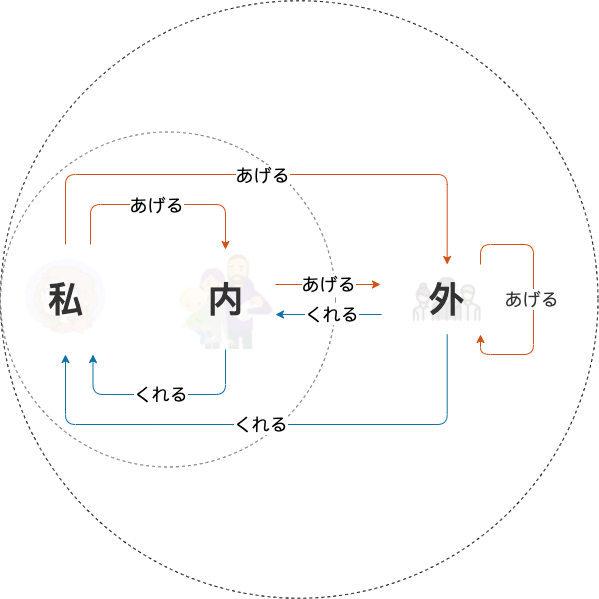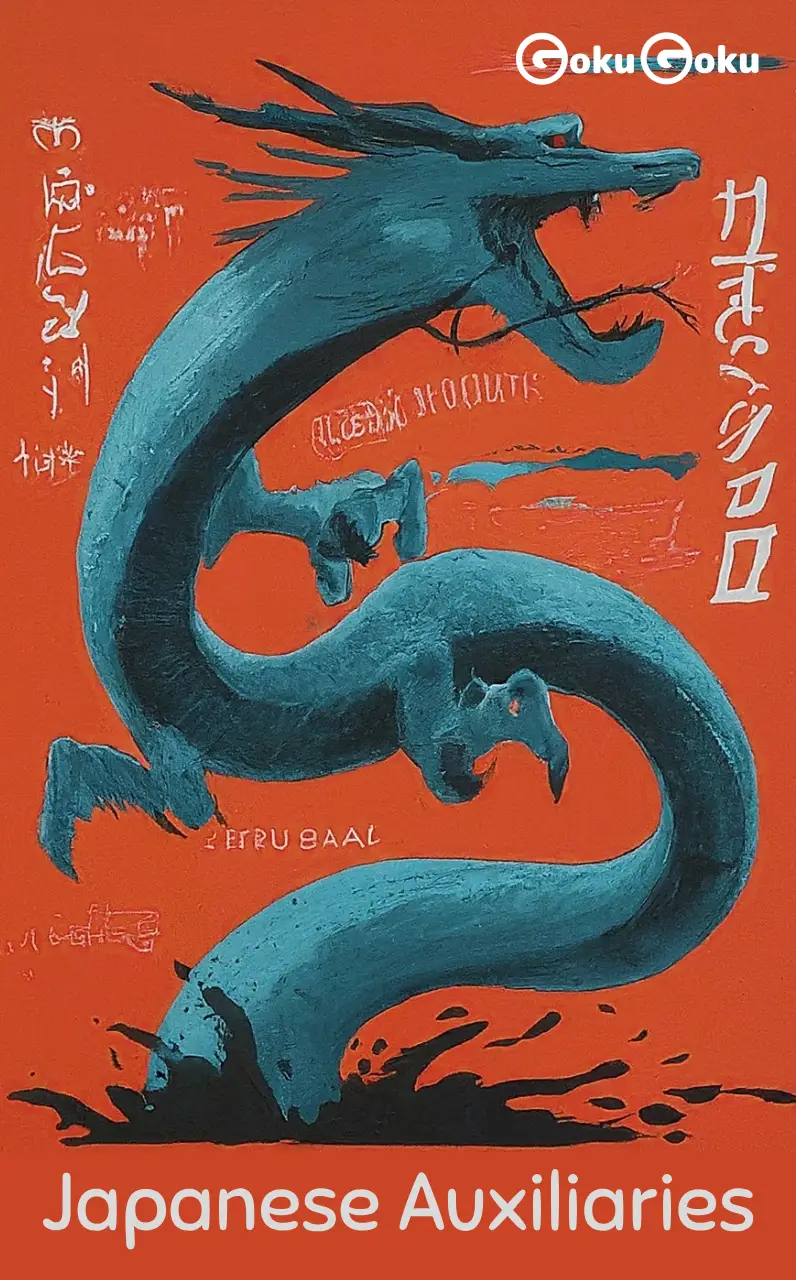あげる/くれる (ageru / kureru) Meaning Japanese Grammar - Give
GokuGoku
Get in touch with me5 min reading time
あげる and くれる are two Japanese verbs that both mean give, and are both used in different contexts.
あげる (ageru) means to give from the speaker's point of view. あげる is used when you give or do something for someone else.
私が友達にプレゼントをあげる。
I give a gift to a friend.
くれる (kureru) means to give from the point of view of the receiver. くれる is used when someone else gives or does something for you.
友達が私にプレゼントをくれる。
A friend gives a gift to me.
As you can see in the two example sentences, we used the following particles:
- が indicates the subject of the action (who gives something)
- を indicates the object (what is given)
- に indicates who receives
We also see how the difference between the two sentences is that we have reversed who gives (subject) and who receives. This difference requires you to change the verb from あげる to くれる.
Difference between あげる and くれる
As we have seen, both あげる and くれる translate the verb give. To understand the difference between the two, consider who does the action and who receives it.
In Japanese the language changes according to the relationship we have with the interlocutor.
あげる is used when me or someone in my circle of friends or family offers something to someone outside my circle of acquaintances.
The key idea for あげる is: from the inside out.
くれる instead is used the one who performs the action does something for someone in a smaller circle.
The key idea for くれる is: from the outside in.

The difference between あげる and くれる can be seen in the diagram above. We can see three circles in the image:
- 私 (
I): Yourself - 内 (
internal): The circle of friends and family - 外 (
external): The outer circle (strangers, superiors, etc.)
As you can see, when something is given from an innermost circle outwards the verb to use is あげる.
On the contrary, when something is given from the outermost circle to an innermost one the verb to use is くれる.
Synonym of ageru: 与える, ataeru
与える means give, confer, assign and its polite form is あげる
役職を与えることにしました。
I decided to give him a job.
子供に絵本を与えた。
I gave the child a picture book.
猫に餌を与える。
I feed my cat.
As we see from the examples ataeru is used towards people considered inferior because of their age or their nature or social position. Here is a sentence in Japanese that expresses another difference between the two verbs: the level of politeness
「あげる」は「与える」と同じ意味ですが、人に対して敬う気持ちがある言葉が「あげる」と認識してください。
'Ageru' has the same meaning as 'Ataeru', but consider that 'ageru' is a respectful word towards people.
てあげる form
The verbs あげる, くれる, もらう, いただく are also commonly used combined with the て form of the verb.
- てあげる: I perform an action in favor of a person in my group
uchi内 or towards an outside member 外 who is considered equal.
Here is a comment コメント on a video of a 天ぷらのレシピ Tenpura recipe on the Internet:

2歳の子供に作ってあげたら大喜びでした。ありがとうございます。
I made it for my 2 year old child and he was delighted. Thank you very much.
When we use the あげもらい verbs: giving and receving verbs, we have to consider the concept of 上下関係 the hierarchical relationships.
Many expressions even if grammatically correct, cannot be used towards superiors, the owner of the company I work for example, as it would be indelicate.
あげもらい the Giving and Receiving verbs imply the fact of helping, of doing a favor for somebody, reason why they are not appropriate towards a superior.
荷物が重そうだね。手伝ってあげるよ。
Your luggage looks heavy. Let me help you.
Comment on a trailer containing くれない, the negative form of くれる, in particular the て form + くれない:

せめて予告編も4Kにしてくれないと[こんなに綺麗になるなら観に行こう]ってならないと思うんだけど。
I think people won't say 'if it's that good I'll go and watch it' unless they at least make the trailer in 4K.
More examples of あげる and くれる
In many languages あげる and くれる have the same translation, in Japanese as we have seen there are different expressions:
- in relation to the giver and the receiver
- and also in in relation to hierarchical relations
智子は私にお菓子をくれた。
Tomoko gave me a sweet.
私は智子にケーキをあげた。
I gave Tomoko a cake.
We use あげる and くれる in the case of an informal, familiar, colloquial and is used with friends or within the family. In a high and formal context, towards superior people in a work context or towards people one does not know, the verbs used are:
- 差し上げる for the verb
give - 頂く for the verb
receiveOther examples: Soto (the teacher) towards Uchi (my sister)
先生が妹にプレゼントをくれました。
The teacher gave my sister a present.
Soto (John) towards Soto (Yamada)
ジョンさんは山田さんにお金をあげました。
John gave Yamada money.
Similar grammar points in Japanese 📚

